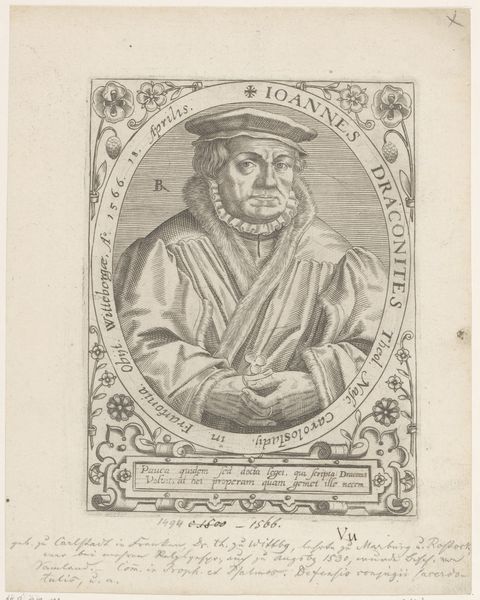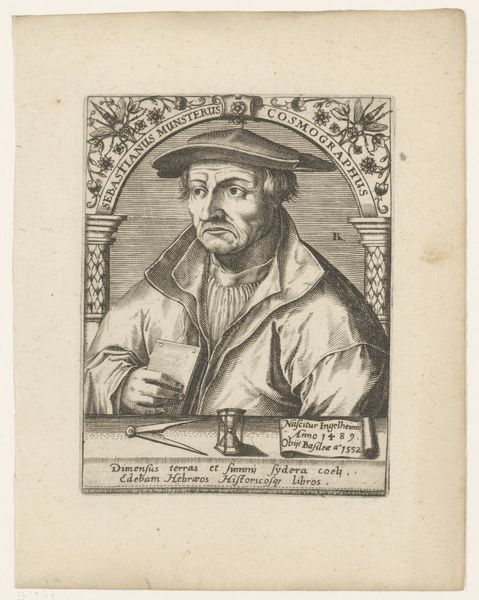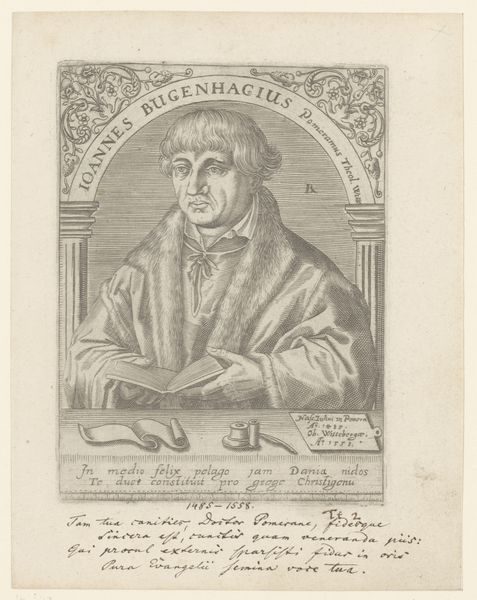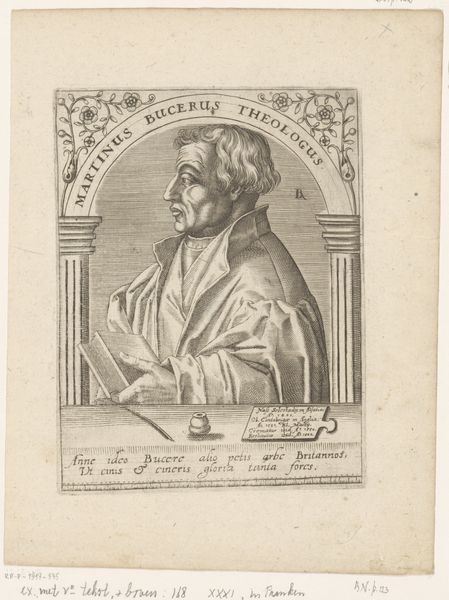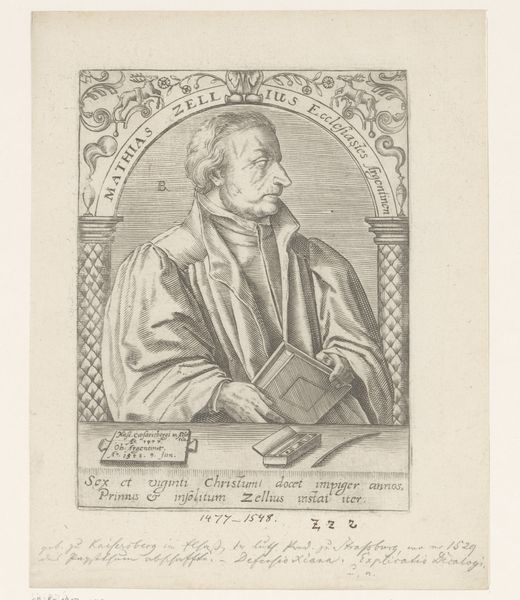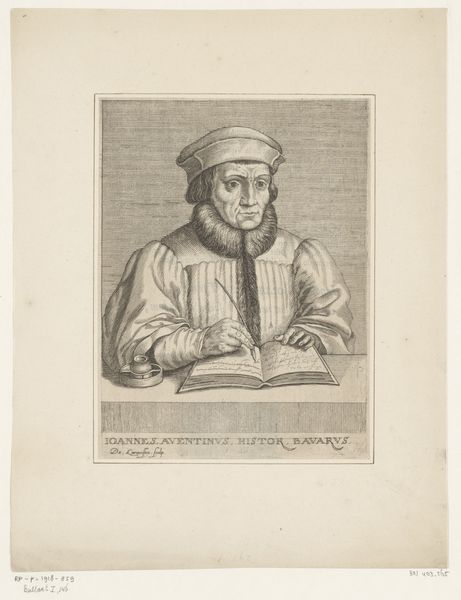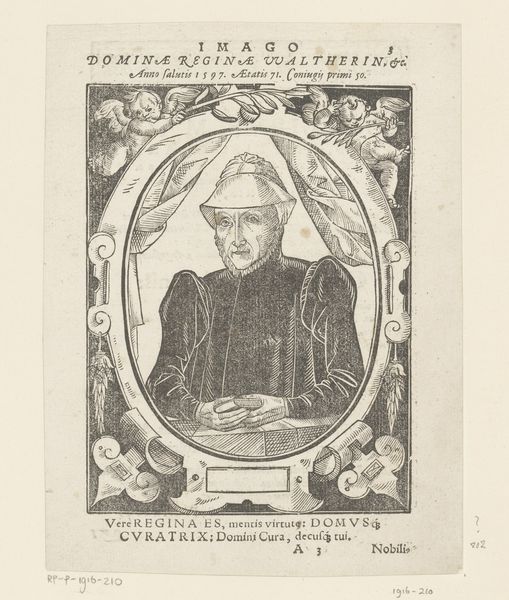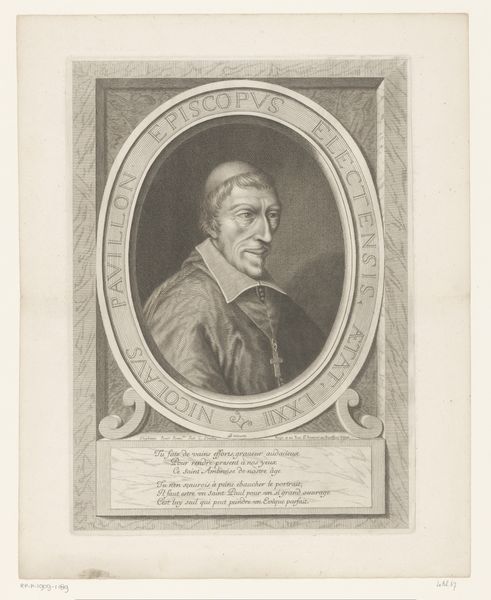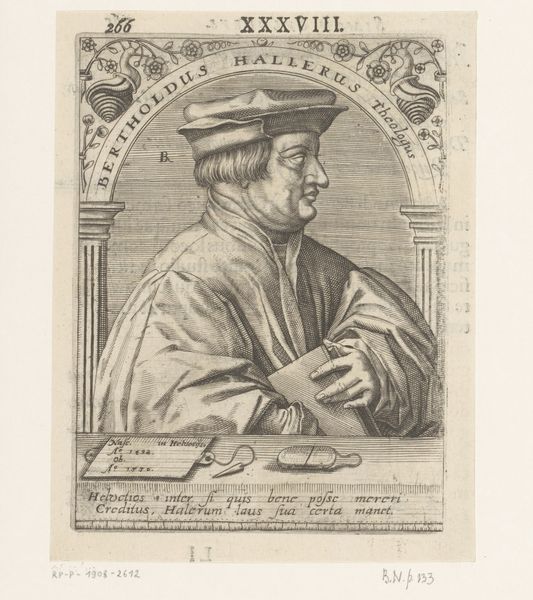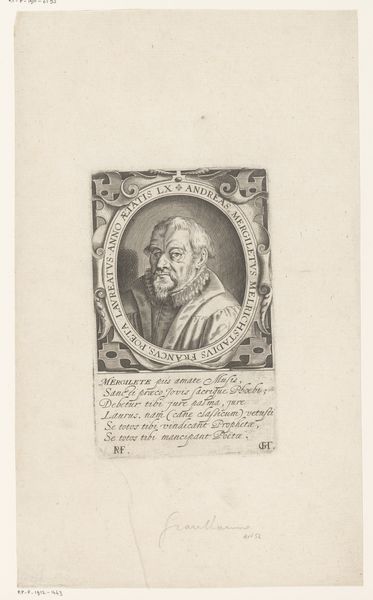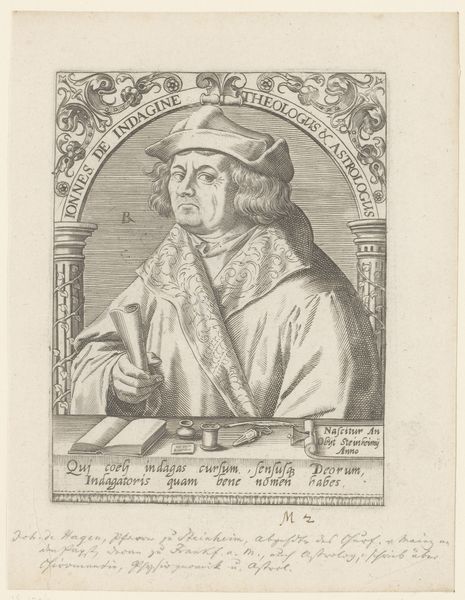
drawing, print, paper, ink, engraving
#
portrait
#
drawing
# print
#
figuration
#
paper
#
ink
#
line
#
northern-renaissance
#
engraving
Dimensions: height 144 mm, width 107 mm
Copyright: Rijks Museum: Open Domain
Curator: Ah, here we have an intriguing Northern Renaissance print. It's titled "Portret van Paul Fagius," or Portrait of Paul Fagius, created somewhere between 1597 and 1599 by Robert Boissard. The materials are listed as ink, paper, and engraving. What strikes you about it at first glance? Editor: It's remarkably… restrained. Everything is carefully delineated, contained. The figure is framed, literally, within architectural elements, which gives him an air of authority but also, oddly, confinement. It's like looking at a scholar through a very specific window. Curator: Precisely. Boissard captures the essence of Fagius, the Hebraist, within layers of symbolism. The architectural frame suggests a portal, or perhaps a life stage that opens up for a brief amount of time before it is over. There are two plant sprigs, in full bloom, situated near the top of the architectural arches. There is the prominent display of Latin phrases within the composition, which speaks to Fagius' devotion to classical erudition, if not obsession. Editor: The tulips. Aren't those rather Dutch? It's strange to see them so formally integrated into the portrait of a theologian; they lend an air of, dare I say, burgeoning commerce to the whole scene! Is this suggesting, perhaps, an increasing secularization or valuing of worldly success alongside the spiritual? It also softens up the image a bit, doesn't it? Those arches really add a stark formality that clashes nicely with those flowers. Curator: Indeed! You see how these images contain multitudes. Tulips, originating from the Ottoman Empire, were becoming highly prized and associated with prosperity, representing new mercantile routes. The portrait memorializes Fagius' intellectual prowess while subtly hinting at broader socio-economic shifts, right when printing started to enable faster communications and an exchange of cultural memes and ideas. Editor: It makes me think about how carefully curated public images are, even centuries ago. Boissard's portrait isn't just a likeness; it's a statement about Fagius’ place in the world and the values he embodied—or perhaps the values the patron wished to associate with him. It’s like a very old version of a LinkedIn profile! Curator: A testament to the enduring power of symbols and how they evolve through different contexts. Even in what appears a simple portrait, so many social currents are at play. Editor: I think you’re spot-on! This piece shows a Renaissance person's place within a complicated historical framework, the subject of all that is written and unwritten, just beyond the border.
Comments
No comments
Be the first to comment and join the conversation on the ultimate creative platform.
